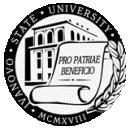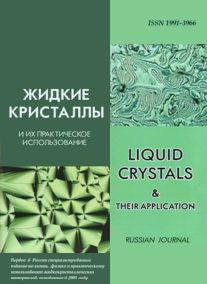|

|
Liquid Crystals and their Application
Russian Journal Zhidkie kristally i ikh prakticheskoe ispol'zovanie Жидкие кристаллы и их практическое использование |

|
|

|

|
|
|
Menu

|
|
|
|
|
Zhidk. krist. ikh prakt. ispol'z. = Liq. Cryst. and their Appl., 2017, 17 (4), 97—105.
DOI: 10.18083/LCAppl.2017.4.97 |

|
|
Properties of Nanocrystalline Cellulose Obtained From Celluloses of Annual Plants
|
M. I. Voronova1, O. V. Surov1, N. V. Rubleva1, N. E. Kochkina1, S. M. Prusova1, Yu. A. Gismatulina2,
V. V. Budaeva2, A. G. Zakharov1
|
Author affiliations
1G.A. Krestov Institute of Solution Chemistry of the Russian Academy of Sciences,
1 Akademicheskaya St., Ivanovo, 153045, Russia
E-mail: miv@isc-ras.ru
2Institute for Problems of Chemical and Energetic Technologies of the Siberian Branch of the RAS,
1 Socialisticheskaya St., Biysk, 659322, Russia
|
|
Abstract
Nanocrystalline cellulose (CNC) was obtained by sulfuric acid hydrolysis from celluloses of annual plants: miscanthus, flax straw, hemp, Jerusalem artichoke, jute and flax. Properties of CNC suspensions and films were studied using transmission electron microscopy, polarizing optical microscopy, IR spectroscopy, dynamic light scattering, X-ray diffraction and elemental analysis. Nanoscale CNC particles have a pronounced anisotropic rod-like shape. High colloidal stability of CNC aqueous suspensions is determined by a high negative surface charge of CNC particles. CNC films exhibit birefringence and display "fingerprints" textures, which are characteristic of chiral nematic structures.
Keywords: nanocrystalline cellulose, chiral nematic structure
|
|
|
|
|
|




